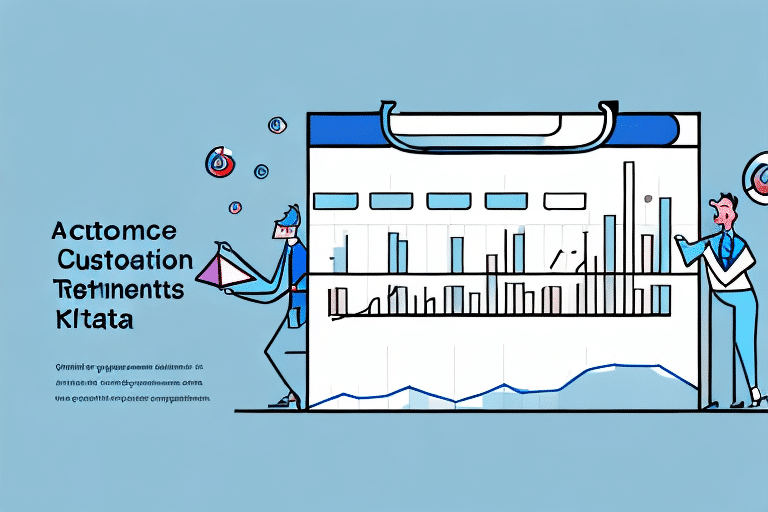Understanding Your Customer Base
In the competitive landscape of e-commerce, comprehending your customer base is fundamental to driving success. By distinguishing between new customer orders and returning customer sales, businesses can tailor their strategies to better meet the needs of their audience.
Defining New Customer Orders vs Returning Customer Sales
New customer orders refer to purchases made by individuals who have never interacted with your e-commerce store before. In contrast, returning customer sales are repeat purchases from customers who have previously engaged with your brand. Monitoring the balance between these two metrics provides invaluable insights into customer behavior and business health.
The Importance of Knowing Your Customer Base
Understanding your target audience allows e-commerce businesses to customize marketing efforts, optimize product offerings, and enhance customer service. This targeted approach leads to increased customer satisfaction, higher retention rates, and ultimately, greater revenue. According to a Shopify report, acquiring a new customer can cost five times more than retaining an existing one.
Measuring Key E-Commerce Metrics
How to Measure New and Returning Customers
Most e-commerce platforms, such as Shopify and BigCommerce, offer built-in analytics tools to track new and returning customers. These tools provide detailed reports on purchasing behavior, frequency, and channel usage, enabling businesses to identify trends and make informed decisions.
For a more in-depth analysis, integrating analytics software like Google Analytics can offer additional insights into customer demographics, behavior flow, and conversion paths.
Other Essential E-Commerce Metrics
- Conversion Rates: The percentage of website visitors who complete a desired action, such as making a purchase.
- Customer Lifetime Value (CLV): The total revenue a business can expect from a single customer account throughout their relationship.
- Average Order Value (AOV): The average amount spent each time a customer places an order.
- Shopping Cart Abandonment Rate: The percentage of shoppers who add items to their cart but leave without completing the purchase.
Understanding these metrics in conjunction can provide a holistic view of your e-commerce performance. According to a study by Forbes, optimizing these metrics can lead to a significant increase in overall profitability.
Impact on Revenue and Profit Margins
Revenue Growth Through New Customer Orders
Attracting new customers is vital for expanding your market reach and driving revenue growth. Each new customer represents an opportunity for additional sales and potential brand advocates. However, it's important to balance acquisition efforts with retention strategies to ensure sustainable growth.
Profit Margins and Returning Customer Sales
Returning customers typically contribute to higher profit margins due to lower acquisition costs and increased likelihood of upselling and cross-selling. A Harvard Business Review study found that increasing customer retention rates by just 5% can boost profits by 25% to 95%.
Implementing loyalty programs, personalized marketing, and exceptional customer service can enhance the repeat purchase rate, thereby positively impacting profit margins.
Strategies for Customer Acquisition and Retention
Increasing New Customer Acquisition
- Enhance Online Visibility: Utilize SEO optimization, content marketing, and social media advertising to attract new audiences.
- Offer Incentives: Provide discounts, free shipping, or exclusive offers for first-time customers to encourage purchases.
- Leverage Influencer Marketing: Collaborate with influencers to reach a broader and more targeted audience.
According to Statista, targeted marketing campaigns can significantly increase new customer acquisition rates when aligned with customer preferences.
Enhancing Repeat Purchase Rates
- Implement Loyalty Programs: Reward customers for their repeat business with points, discounts, or exclusive access to new products.
- Personalize Marketing Efforts: Use data analytics to send personalized product recommendations and tailored promotions.
- Maintain Excellent Customer Service: Provide responsive and helpful support to address customer concerns and foster loyalty.
A report by Invesp highlights that returning customers spend 67% more than new customers, emphasizing the importance of retention strategies.
Balancing Focus on New vs Returning Customers
Finding the right balance between acquiring new customers and retaining existing ones is crucial for long-term success. The optimal focus depends on the business stage, market conditions, and specific goals.
For New Businesses:
Startups and new e-commerce ventures should prioritize customer acquisition to build a solid customer base and establish brand presence in the market.
For Established Businesses:
Businesses with an established customer base should focus more on retention strategies to maximize customer lifetime value and sustain revenue growth.
Regularly analyzing your key metrics will help determine the appropriate balance and inform strategic adjustments as needed.
Leveraging Data Analytics to Optimize E-Commerce Operations
Data analytics is a powerful tool for understanding customer behavior and optimizing e-commerce strategies. By analyzing purchasing patterns, preferences, and interactions, businesses can make data-driven decisions that enhance customer experiences and drive growth.
Implementing Effective Analytics Tools
Utilize platforms like Google Analytics, Mixpanel, or Kissmetrics to gather comprehensive data on customer interactions and sales performance.
Identifying Growth Opportunities
Data insights can reveal opportunities for product expansion, market segmentation, and personalized marketing campaigns. For example, identifying high-performing products can inform inventory decisions, while understanding customer demographics can guide targeted advertising efforts.
Best Practices for Analyzing and Acting on Customer Data
- Set Specific Goals: Define clear objectives for what you want to achieve with your data analysis, such as increasing retention rates or boosting average order value.
- Use Automation Tools: Streamline data collection and analysis processes with automation tools to save time and reduce errors.
- Create Personalized Experiences: Leverage data to deliver personalized marketing messages, product recommendations, and tailored offers that resonate with individual customers.
Adhering to these best practices ensures that your data analysis efforts are effective and directly contribute to achieving your e-commerce goals.
Conclusion: The Key to E-Commerce Success
Measuring the balance between new customer orders and returning customer sales is essential for e-commerce success. By understanding and optimizing these metrics, businesses can develop effective marketing strategies, enhance customer satisfaction, and drive sustainable growth. Implementing data-driven approaches and adhering to best practices in customer acquisition and retention will position your e-commerce operations for long-term profitability and success.








